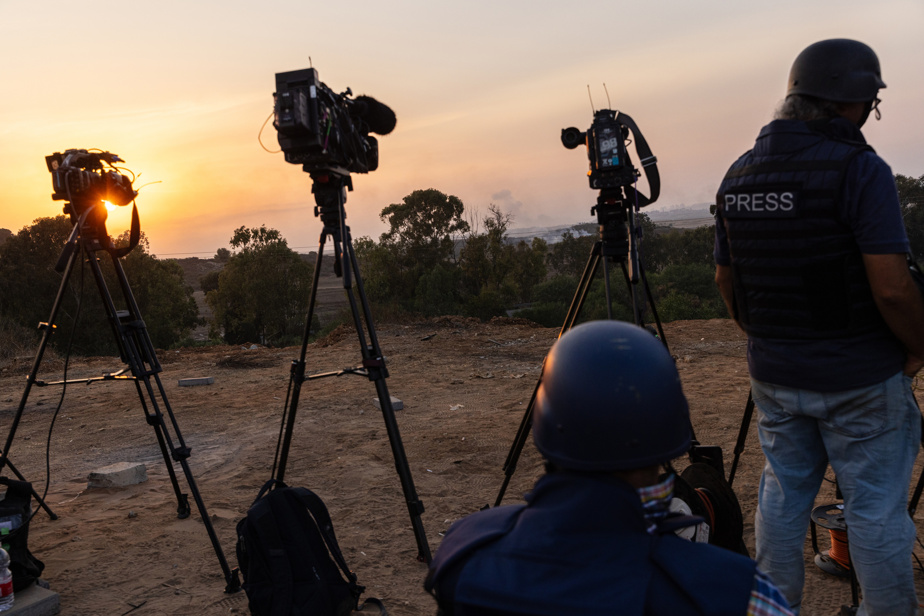(Jerusalem) On social media, a video showing Syrian schoolchildren bloodied after an explosion has been falsely associated with Gaza, illustrating a worrying trend of disinformation that experts say dehumanizes victims of wars in Syria and the Palestinian territory .
Since the start of hostilities between Israel and Palestinian Hamas in the Gaza Strip on October 7, the internet has been flooded with images showing the horrors of war. But some of these are photos and videos taken out of context in order to attract more attention.
AFP journalists specializing in fact-checking revealed in particular that photos and videos from the war in Syria were presented as images from the Gaza Strip.
Widely distributed on social networks, a video filmed by a teacher in a school in the village of Afes, in northwest Syria, shows children visibly terrified after a bombardment by government forces on December 2.
White Helmet rescuers operating in rebel areas in Syria told AFP that shrapnel had flown into classrooms and injured several students. A teacher died from her injuries.
The footage was filmed against the backdrop of Syria’s civil war that began in 2011, but some users claimed the video showed Israeli snipers opening fire on children in the Gaza Strip.
“Not a fiction”
For Ismail al-Abdallah, a White Helmets volunteer, the spread of this false information minimizes “the gravity of the real horrors faced by civilians” in the Palestinian territory and Syria.
“Our history is not a fiction that people can simply modify to invent another story,” he criticized in an interview with AFP.
Another video, purporting to show the horrors suffered by civilians in Gaza, where children are among the worst affected by the war, was actually filmed in Syria in 2014. It shows a boy in tears after the death of his brothers and sisters.
A 2013 photo showing dead Syrian children wrapped in shrouds was also hijacked and shared by a US congresswoman.
These diverted images overshadow those taken by journalists on the ground at the risk of their lives and, according to experts, they also confuse the understanding of the conflicts.
“The goal of disinformation is not only to make people believe a lie, but also to divide,” Lee McIntyre, a researcher at Boston University, told AFP.
Among those recycling old images are high-profile influencers.
This is the case of the American Jackson Hinkle, who shared in November a video of a woman holding a toy and going down the stairs of a building swept by shrapnel, with the following caption: “You don’t cannot break the Palestinian spirit.
It was actually filmed in 2016 in the Syrian city of Homs, AFP journalists revealed using reverse image search.
On X, users operate a revenue-sharing program that researchers say encourages extreme and misleading content intended to boost traffic.
For Kenan Masoud, the school director in the Syrian village of Afes, the misinformation is “sad and disgusting”.
“Images of children and injured people are not for sale.”
“Propaganda”
These misappropriations of images are “dangerous because they give critics an easy way to dismiss well-founded allegations,” said Roger Lu Phillips, legal director of the Syrian Center for Justice and Accountability (SJAC).
Disinformation is often carried out “for propagandist purposes” or “out of pure laziness,” he explains.
It “sows doubt in people’s hearts,” says Ranim Ahmed, of the human rights association The Syria Campaign. This can push the public to remain silent rather than engage in acts of solidarity for example, he continues.
Disinformation also jeopardizes future investigations into war crimes, says Sophia Jones, researcher for the NGO Human Rights Watch (HRW).
It arouses “a dangerous lack of confidence in all the images and events taking place on the ground, while there are well-documented and verified cases of violations of human rights and the laws of war which should be the subject of of an investigation”.
